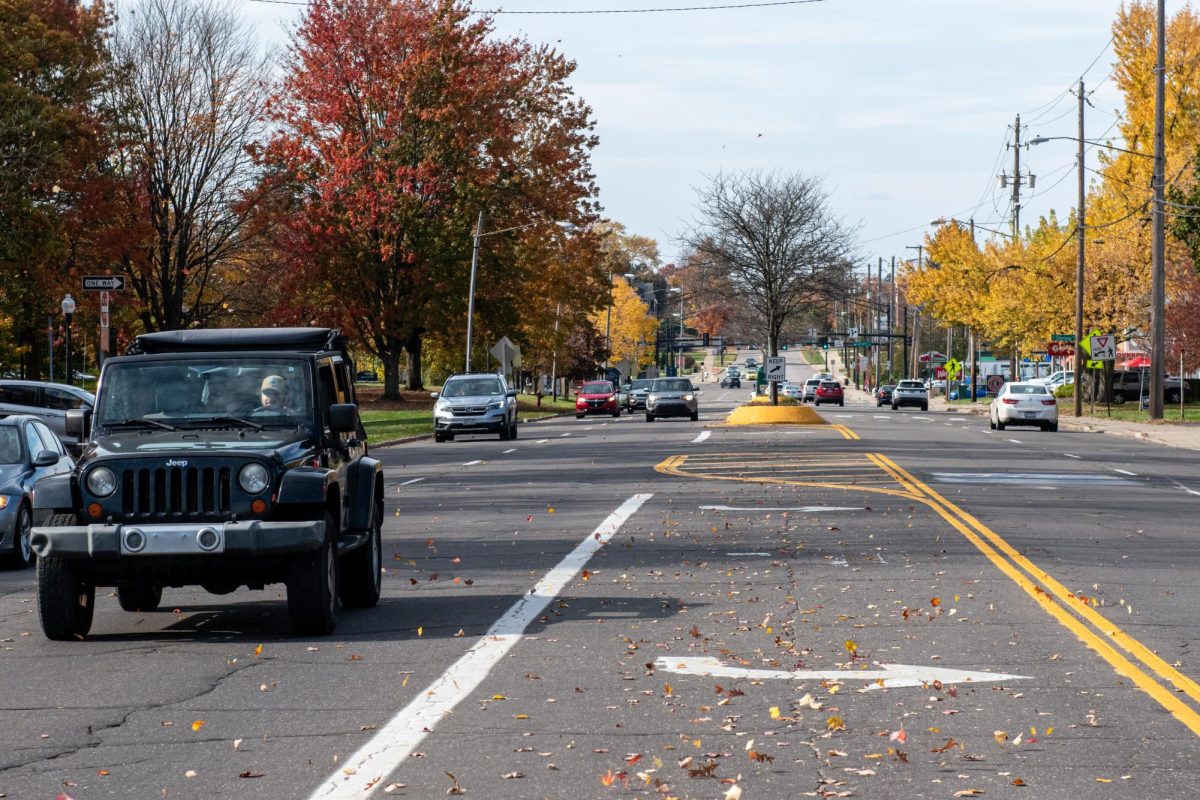The Kent Stater hopes to encourage lively debate about today’s issues in our Opinion section. To submit an opinion piece for potential publication, email your article to [email protected].
For many students, college represents newfound freedom, a transition into adulthood and the responsibility of making independent choices. One such responsibility includes navigating transportation; whether that means relying on public transit, campus shuttles or student-driven vehicles.
However, student safety on the road is an increasing concern, particularly for college drivers who may lack experience, face distractions or engage in risky behavior behind the wheel. One major concern is distracted driving among college students.
The digital age has made smartphones an extension of our hands. The temptation to check messages, scroll through social media or respond to notifications while driving is difficult to resist.
According to the National Highway Traffic Safety Administration, distracted driving claims thousands of lives each year, and college-aged drivers are among the most susceptible to these behaviors. This issue is further worsened by the pressures of academic life, leading students to multitask behind the wheel.
Another factor contributing to unsafe college driving is inexperience. While many students have been licensed for years, they often lack extensive driving experience in diverse road conditions.
Campus environments are particularly challenging, with heavy foot traffic, cyclists and numerous stop-and-go scenarios. The lack of familiarity with local roads, combined with the high number of pedestrians, increases the likelihood of accidents.
Kent’s campus is particularly prone to this since our walkways are also used as driving spaces for faculty and students moving in.
Additionally, the influence of alcohol and substance use on college campuses cannot be ignored.
Despite ongoing awareness campaigns and ride-share availability, instances of impaired driving still occur. Peer pressure, late-night social events and the misconception that “one or two drinks” will not not impact driving ability create dangerous situations for both drivers and pedestrians.
Schools have made efforts to combat this through designated driver programs and campus-provided transportation, but gaps in accessibility remain.
To address these concerns, our university must take proactive steps. Expanding educational campaigns that emphasize the dangers of distracted and impaired driving, increasing the availability of late-night shuttles and implementing stricter enforcement of driving violations on campus can all contribute to a safer environment.
Drivers should be aware of their surroundings at all times. Our campus is public, meaning that anyone can walk around. Kent is a huge school with over 25,000 people on the main campus. People are walking everywhere when they come up here.
Ultimately, student safety must be a priority, and addressing the risks associated with college drivers is a crucial step toward preventing accidents and saving lives. With collective efforts from students, administrators and law enforcement, campuses can foster a culture of responsible driving and ensure that students arrive safely at their destinations.
Parents can also play a role by reinforcing safe driving habits before students leave for college. Technology, such as apps that limit phone use while driving, can also be integrated into safety initiatives. By making road safety a shared responsibility, the risks associated with college drivers can be significantly reduced, creating a safer and more aware student body.
Chloe Porter is a columnist. Contact her at [email protected].



